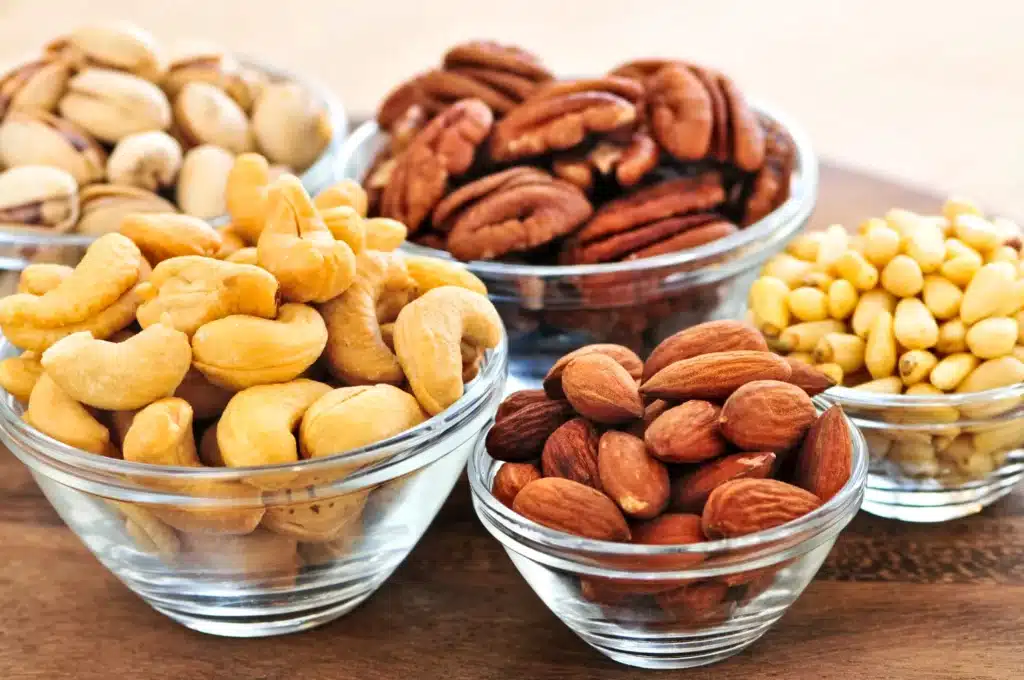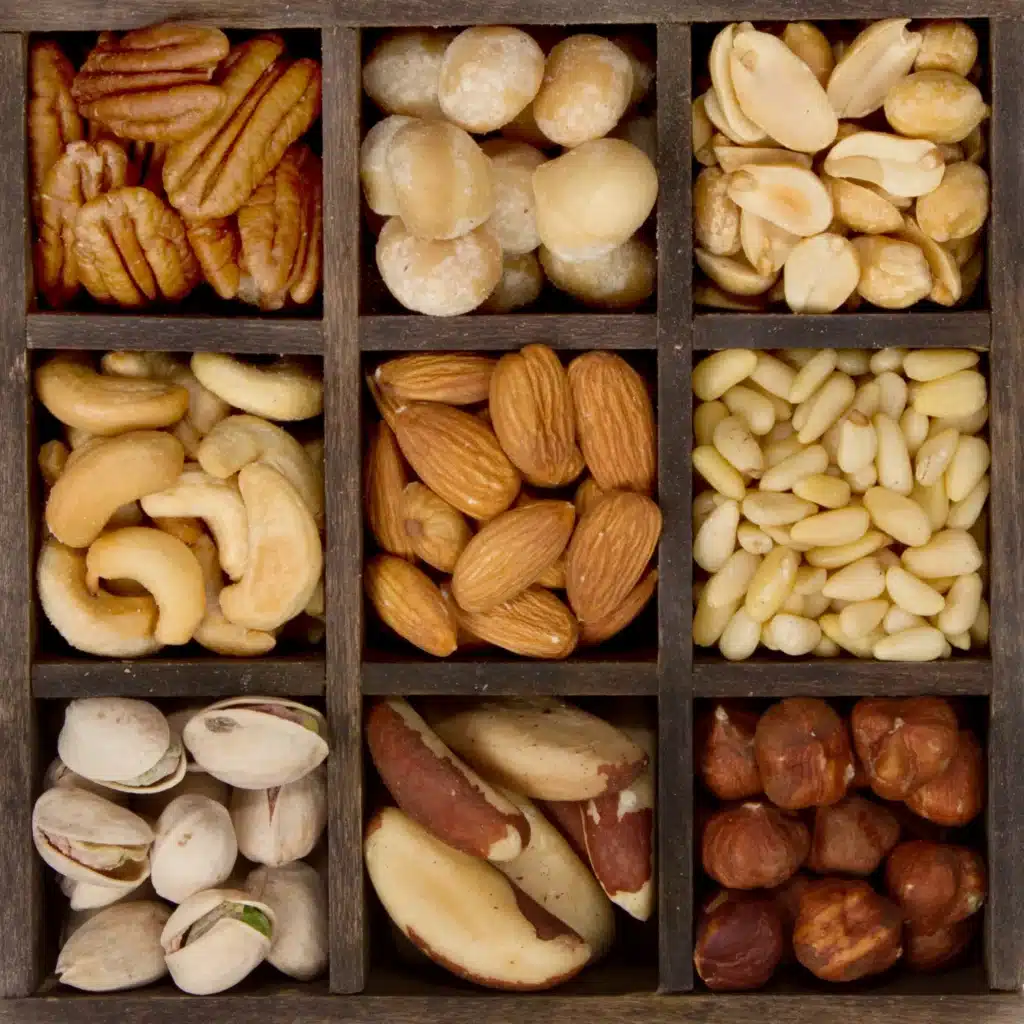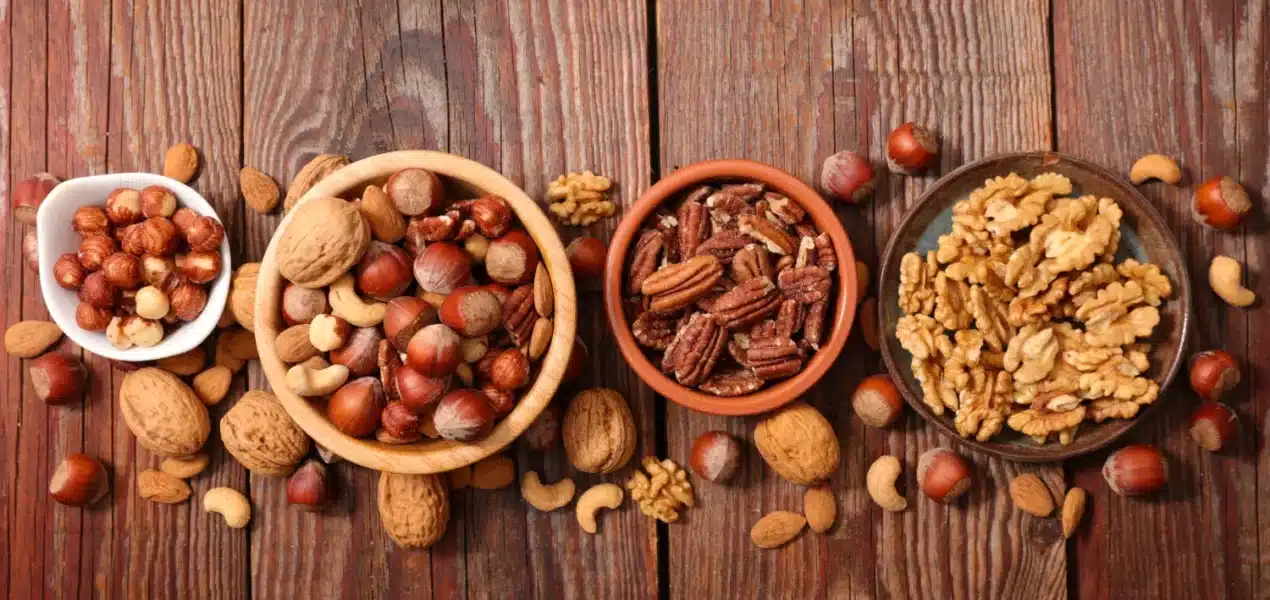Updated On: April 07, 2024 by dina
Expensive nuts offer a tantalising glimpse into the intersection of indulgence, craftsmanship, and culinary excellence. In culinary delights, nuts hold a special place for their rich flavours, crunchy textures, and excellent nutritional value. Yet, while many nuts are widely accessible and affordable, a realm of exquisite indulgence exists in the form of the most expensive nuts. These rare and coveted treasures command high prices, drawing both intrigue and admiration from connoisseurs and food enthusiasts alike.
As we delve into luxury nuts, we uncover a fascinating tapestry of factors contributing to their exclusivity and high price tags, from their scarcity and labour-intensive cultivation to their unique flavours and extraordinary health benefits. This article will explore the world of the most expensive nuts, unravelling the secrets behind their allure and understanding the factors that make them highly delicacies.
Why Some Nuts Are Expensive?

Several reasons contribute to the higher prices of certain nuts, such as:
- Rarity: Some nuts are grown in limited quantities or can only be found in specific regions. For example, macadamia nuts are primarily cultivated in Australia and Hawaii, making them rarer and more expensive than those widely available nuts like peanuts.
- Labour-intensive cultivation: Certain nuts require meticulous cultivation and harvesting processes. For instance, pistachios need to be harvested manually, and it takes considerable effort to extract the nuts from their shells. This labour-intensive process contributes to the higher cost of these nuts.
- Climate and growing conditions: Nuts are often sensitive to climate and require specific growing conditions to thrive. Temperature, rainfall, soil quality, and elevation can significantly affect their cultivation. If a nut has specific growing requirements or is cultivated in regions with challenging conditions, it can increase the cost of production.
- Processing and handling: Some nuts undergo extensive processing to remove their shells or skins, which adds to the overall cost. Additionally, the transportation and storage of nuts require proper handling to maintain their quality, which can increase expenses.
- Demand and popularity: Nuts in high demand or have gained popularity among consumers tend to have higher prices. Factors such as nutritional value, taste, and culinary versatility can contribute to increased demand, leading to higher prices in the market.
- Import/export costs: If nuts are imported from other countries, there may be additional costs involved in shipping, customs duties, and other import/export fees, which can affect their final retail price.
- Crop fluctuations: Nuts, like any agricultural product, can be subject to variations in crop yield due to factors such as weather conditions, pests, or diseases. The price tends to be high due to the limitation and poor harvesting.
These factors may depend on the specific nut and its growing region, supply and demand changes, and other market factors.
What Are the Most Expensive Nuts?
The prices of nuts can vary over time due to market fluctuations, availability, and other factors. However, as of my knowledge cutoff in September 2021, here are 10 of the most expensive nuts:

- Macadamia Nuts: Macadamia nuts are known for their rich, buttery flavour and are often considered expensive nuts in the world. Macadamia Nuts cost from $5 to $10 per 100 grams.
- Pine Nuts: Pine nuts, known as pignoli or pinon nuts, are widely used in Mediterranean and Middle Eastern cuisines. They are prised for their delicate flavour and can be relatively costly. Pine Nuts cost around $5 to $10 per 100 grams.
- Pistachios: Pistachios are flavourful nuts with a distinctive greenish hue. They require significant labour to harvest and process, contributing to their higher price than some nuts. Pistachios cost around $3 to $7 per 100 grams.
- Pecans: Pecans are growing in North America and are commonly used in desserts and baking. They have a rich, buttery taste and can be relatively expensive. Pecans cost around $3 to $6 per 100 grams.
- Brazil Nuts: Brazil nuts are known for their unique flavour and high selenium content. Due to their limited cultivation areas and the need for manual harvesting, they can be relatively costly. Brazil Nuts cost around $3 to $6 per 100 grams.
- Cashews: Cashews are popular nuts that are consumed worldwide. They taste creamy and are often more expensive than other nuts due to the labour-intensive process of removing the outer shell. Cashews cost around $2 to $5 per 100 grams.
- Walnuts: Walnuts are versatile in various culinary preparations. They have a distinct flavour and are relatively expensive, especially if they are of high quality or have specific origins (such as the premium “Juglans regia” variety). Walnuts cost around $2 to $5 per 100 grams.
- Hazelnuts: Hazelnuts, also known as filberts, are commonly used in confections and desserts, particularly in chocolate products like Nutella. They can have a higher price tag due to factors like processing and demand. Hazelnuts cost around $2 to $5 per 100 grams.
- Almonds: Almonds are widely consumed and versatile nuts. While prices can vary depending on the variety and origin, premium types like Marcona almonds or organic almonds can be more expensive. Almonds cost around $2 to $5 per 100 grams.
- Black Walnuts: Black walnuts are a specific variety with a stronger flavour than regular walnuts. They are less common and can be relatively expensive. Black Walnuts cost around $2 to $4 per 100 grams.
These rankings and prices may have changed since September 2021 and can vary depending on various factors, so check current market prices for specific nuts.
What Are the Health Benefits of Expensive Nuts?
Like other nuts, expensive nuts are generally considered nutritious and offer various health benefits, such as:

- Heart health: Many expensive nuts, such as almonds, walnuts, and macadamia nuts, are rich in healthy fats, which enhance heart function
- Nutrient-dense: Expensive nuts are filled with essential nutrients such as vitamins, minerals, antioxidants, fibre, vitamin E, magnesium, calcium, potassium, and other beneficial mixes that support health.
- Weight management: Despite being energy-dense, nuts can aid in weight management due to their satiating effect. Healthy fats, protein, and fibre in nuts help keep you full and satisfied, reducing the tendency to overeat.
- Blood sugar control: Expensive nuts have a low glycemic index, meaning they cause a slower and steadier rise in blood sugar levels compared to high-glycemic foods; this makes them suitable for individuals with diabetes or those aiming to maintain stable blood sugar levels.
- Anti-inflammatory properties: Some expensive nuts, such as walnuts and almonds, contain antioxidants and anti-inflammatory compounds that reduce chronic inflammation in the body.
- Brain health: Certain expensive nuts like walnuts are known for their brain-boosting properties. They contain omega-3 fatty acids, which benefit cognitive function and can reduce the risk of neurodegenerative diseases.
- Digestive health: Expensive nuts are a good source of dietary fibre, which boosts healthy digestion and prevents constipation. The fibre content also supports a healthy gut microbiome, which impacts overall well-being.
Nuts offer various health benefits; they are also calorie-dense. Therefore, portion control is essential, especially for those watching their calorie intake. Consuming various expensive nuts into a balanced diet can be a part of a healthy lifestyle.
How Often Should You Consume Nuts to Stay Healthy?
Consuming nuts as part of a balanced diet can benefit health due to their nutrient content. While no specific frequency applies to everyone, including a proper amount of nuts in your diet regularly is generally considered beneficial. For example, the American Heart Association suggests consuming about 4 servings of unsalted nuts per week (approximately 1.5 ounces or 42.5 grams per serving) as part of a heart-healthy diet. Here are some general guidelines to consider:
- Portion control: Nuts are energy-dense, containing many calories per serving. Be mindful of portion sizes to avoid excessive calorie intake.
- Variety: Different types of nuts offer varying nutrient profiles. So, to benefit from them, it’s better to consume more than 1 type in a portion and include a variety of nuts in your diet, such as almonds, walnuts, cashews, pistachios, and peanuts.
- Moderation: While nuts offer health benefits, they are still high in fat, but mostly healthy fats. Consuming them in moderation helps maintain a balanced diet.
- Personal considerations: Consider your overall calorie needs, dietary goals, and any specific dietary restrictions or allergies.
Dietary recommendations can vary depending on individual circumstances and specific health conditions. So, it’s better to consult with a registered dietitian or healthcare professional who can provide personalised advice based on specific needs.

The world of expensive nuts takes us on an enchanting voyage into luxury and gastronomic extravagance. These unique treasures captivate our senses with exquisite flavours, textures, and health benefits. From the rare and labour-intensive cultivation techniques to their distinctive tastes and origins in far-flung corners of the globe, expensive nuts embody culinary craftsmanship. While their prices may seem extravagant, they offer a unique experience that transcends the ordinary, elevating culinary endeavours and captivating the discerning palates of those fortunate enough to indulge.
Whether it be the velvety macadamia nut, the delicate pine nut, or the cherished pistachio, these expensive nuts are testaments to the dedication, passion, and artistry of those involved in their cultivation and production. As we savour the nuances of these luxury nuts, we not only partake in a delectable journey but also gain a deeper appreciation for the intricate and captivating world of gourmet delights.











